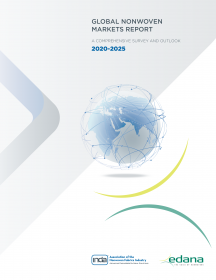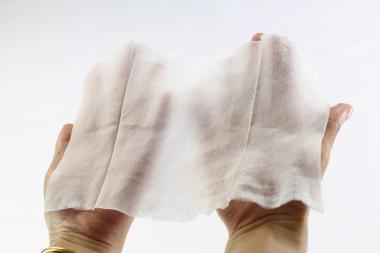INDA and EDANA publish the Global Nonwoven Markets Report
A new report published by the two nonwoven trade associations forecasts strong market demand for nonwovens materials through the next five years, according to the joint publication from EDANA and INDA’s Global Nonwoven Markets Report, A Comprehensive Survey and Outlook, 2020–2025.
This report provides information and analysis of the global nonwoven macro drivers, supply and demand, and regional trade. Among the highlights of the report:
- In the historical period (2010–2020) production increased 6.2% annually, led by growth in the spunlaid processes and drylaid hydroentanglement.
- China led the growth in production, adding an additional 4.7 million tonnes from the end of 2010 through to the end of 2020, representing a 11.5% annual growth rate.
- Across the nonwoven end use segments, the wipes, filtration, medical segments expanded at the fastest rates, given the industry’s rapid response to provide materials that keep the surfaces we touch clean, protect the air we breathe, and provide a barrier to keep our bodies safe.
INDA








